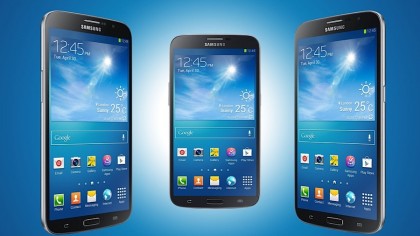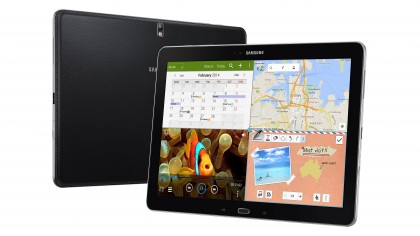The demise of the tablet has been greatly exaggerated
iPads, tabs and phabs are here to stay
The future could belong to the phablet. Ostensibly a smartphone with a massive screen of 5-6.9 inches, Deloitte thinks that "phablets are not a phad" and will represent a whopping 25% of all smartphones sold in 2014 - that's 300 million. They're big in China and South Korea, where 25 million were shifted last year, with sales doubling every quarter. But, as Cremin says: "Their popularity is growing beyond Asia."
It's no wonder. For many people a large-screen phone can do the job of a tablet and more.
So the tablet isn't going away, it's just getting smaller. "Asian markets have often championed miniaturisation, and in this case, it's the tablet that's being shrunk - and the phone functionality is the crucial addition," says Silver, who suggests that a single does-it-all device is bound to appeal more to people with less to spend. In short, it's the fast-growing markets in Asia that call the shots.

There are also practical characteristics to think about. "The old fashioned book market provides a good analogy," says Silver. "When it comes to readability, portability and sheer weight in your bag, the paperback phablet will always outsell the tablet hardback."
If phablets have got entertainment sewn-up, then perhaps the tablet's future is as a productivity device. "While tablets may have been initially introduced as entertainment devices, there has always been an undercurrent of people trying to use them as productivity tools," says Guillaume Field, EMEA Marketing Manager, End User Solutions at Dell.
Field adds that new Windows-based devices have business-grade security and network connectivity as well as an ecosystem of peripherals - keyboards, mice and docking stations. "We have also seen the rise of different form factors including detachable two-in-ones, which offer the ease of a tablet with the productivity of a PC," adds Paul Hicks, PC Product Manager Northern Europe, Toshiba.
Not everyone thinks tablets have lost their gift for making entertainment engaging and immersive, however. "A variety of innovative album apps from the likes of Bjork and Lady Gaga, along with custom versions of streaming services, have made tablets interesting playgrounds for those wanting to enhance the value of music offerings," says Silver.
Get daily insight, inspiration and deals in your inbox
Sign up for breaking news, reviews, opinion, top tech deals, and more.
Apps that ape analogue recording equipment like mixing desks and recordings effects boxes that are only practical on tablets. "The sheer, minimalist appeal of producing music - either for recording or performance - on something as small and elegant as a tablet has drawn many fans from the creative community," says Silver.
Upsize to survive
Another way tablets are being differentiated is by getting bigger; cue Samsung's 12.2-inch NotePRO, the 13-inch Toshiba Excite 13 and Panasonic's 20-inch, Ultra HD 4K-resolution Toughpad 4K UT-MA6 Performance. Pricey and not particularly portable, these are super-niche products for architects and graphic designers. "There is certainly a market for larger tablet screen sizes, and we've seen this to some extent with detachable laptop form factors," says Hicks, "but mainstream sizes of 7-10-inch tablets will continue to dominate due to their portability."

"At that size they start to occupy a much more desk centric role," says Cremin, who wonders whether they should be called tablets at all. "There's an ever growing list of connected devices that allow people to access and use content in different circumstances, and a greater amount of people will connect via a greater amount of devices in the future for this very reason," he says.
Small tablets and big phones, fonblets and phablets, iPads and iPhones - it's all just marketing semantics because they're all essentially the same thing: touchscreen devices. "Ultimately it doesn't matter what their name is as long as they serve a purpose," says Cremin. He's right - and tablets of some kind will be around for many years yet.
Jamie is a freelance tech, travel and space journalist based in the UK. He’s been writing regularly for Techradar since it was launched in 2008 and also writes regularly for Forbes, The Telegraph, the South China Morning Post, Sky & Telescope and the Sky At Night magazine as well as other Future titles T3, Digital Camera World, All About Space and Space.com. He also edits two of his own websites, TravGear.com and WhenIsTheNextEclipse.com that reflect his obsession with travel gear and solar eclipse travel. He is the author of A Stargazing Program For Beginners (Springer, 2015),
